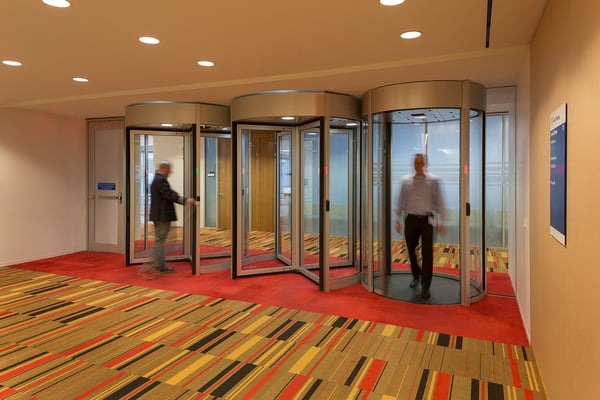Your organization is being threatened, and you may not be safe.
Risk prevention has always been a fundamental part of business planning and operations. And while the various forms of protection available have evolved over the years, the reality is that risk has evolved as well. Ultimately, your organization may be more vulnerable today than it ever has been.
Early Threats to Businesses
It’s probable that on the very first day that the very first business opened its doors (or even before the invention of doors), there was someone trying to do harm to it. Physical crimes were the earliest forms of risk. Theft of merchandise or other property has always been a daily threat, as has vandalism of every kind – from breaking a window to intentionally damaging furniture, surveillance cameras or anything else owned by the organization. Intellectual property theft has been another risk that has threatened businesses from the beginning.
Beyond intentional physical crimes, risks to earlier organizations included shortfalls in fire and life safety systems. A fire at the Triangle Shirtwaist Company factory in New York City in 1911 ended the lives of 146 individuals, and led directly to new legislation and improved safety standards. While life safety systems have greatly improved since that time, the need for rapid egress during an emergency continues to pose risk to today’s organizations.
New Risks for Modern Operations
Today, a wide array of newer vulnerabilities has come into existence, leaving businesses more at risk than ever before. The first and most prevalent risk is cybercrime. While many of cybercrimes are executed from a distance, a surprisingly high number of hackers find it easier to infiltrate the premises physically and gain access to the network to install malware or ransomware, steal intellectual property or identity information, or put a spybot into place that may stay undetected forever. They can do this by stealing a laptop, server or other device and then use it for access. They could also plug their own device directly into an IP port. In addition to theft, vandalism and cybercrimes, today’s businesses have a number of other risks to contend with. The most frightening of these is surely the prospect of workplace violence, terrorism or active shooters. It’s certain that there isn’t an organization today that hasn’t at least given thought to protecting their personnel and visitors from these threats. And while other risks may seem less critical next to the prospect of loss of life, businesses must also protect themselves from operational concerns such as liability and penalties for non-compliance to government regulations.
In addition to theft, vandalism and cybercrimes, today’s businesses have a number of other risks to contend with. The most frightening of these is surely the prospect of workplace violence, terrorism or active shooters. It’s certain that there isn’t an organization today that hasn’t at least given thought to protecting their personnel and visitors from these threats. And while other risks may seem less critical next to the prospect of loss of life, businesses must also protect themselves from operational concerns such as liability and penalties for non-compliance to government regulations.
Many of the crimes mentioned here require the perpetrators to make their way onto the premises, usually into access-controlled areas. This is where social engineering, or the practice of criminals using ruses to get past security guards, comes into play. Although security officers may be highly trained professionals, the reality is that hackers and other criminals are incredibly skilled at finding clever ways to trick them into allowing entrance even without proper credentials. For example, an un-credentialed person might simply carry a coil of cable, a toolbox and a ladder and claim to be a worker responding to a maintenance call.
Defending Against Modern Day Vulnerabilities
With so much risk present every day, how can organizations defend the workplace?
Security entrances are an ideal first line of defense. Ranging from simple crowd control to full prevention of tailgating, they can provide the level of security needed for each entry point. At the most sensitive entries, a security revolving door or mantrap portal requires no officer to be present and will not allow entry of anyone other than the individual matching the authorized credentials being presented.
And, security entrances will not only help you maintain compliance to regulations, they will also provide a layer of protection against workplace violence and active shooter incidents to keep staff and visitors safe.
It is unlikely that the prospect of risk will ever go away. However, by deploying the most comprehensive solutions at your points of entry, you can mitigate the threats to your organization and help keep your workplace more secure.



